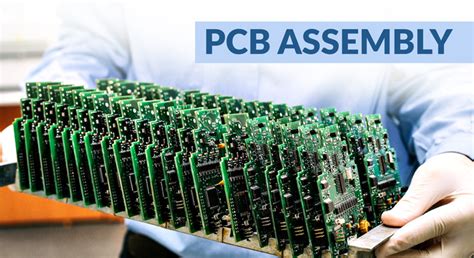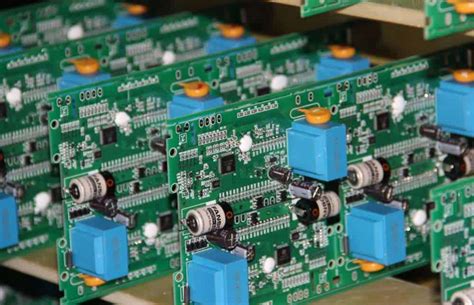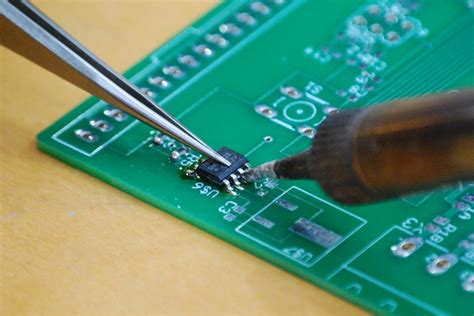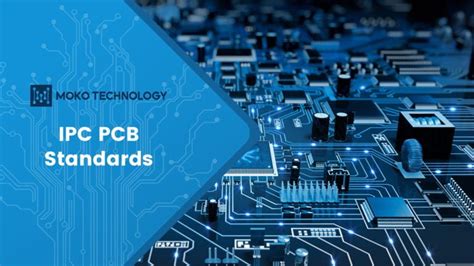Maximizing Efficiency with Contract Manufacturing PCB Assembly Solutions
Key Takeaways
In the fast-evolving landscape of electronics, contract manufacturing for PCB assembly (often referred to as PCBA) is becoming increasingly vital for companies aiming to maintain a competitive edge. Understanding the nuances of contract manufacturing in PCB assembly allows businesses to take advantage of specialized expertise and advanced technology without extensive in-house investment. The benefits are manifold; companies can significantly enhance production efficiency while also reducing overhead costs, making it an appealing strategy for organizations of all sizes. Key strategies to enhance efficiency in PCBA include adopting lean manufacturing principles, which help minimize waste and optimize resource utilization. Furthermore, implementing cost reduction techniques through contract manufacturing allows firms to sculpt a more sustainable financial model by tapping into the economies of scale offered by established manufacturers. Streamlining processes in PCB production not only quickens the time-to-market but also improves overall product quality. By leveraging best practices for optimizing your manufacturing approach, businesses can better adapt to shifting market demands and technological advancements. These efforts are essential not only for survival but also for thriving within an increasingly competitive marketplace where adaptability becomes a defining characteristic of success.
Understanding Contract Manufacturing in PCB Assembly
Contract manufacturing is a vital component of the PCB assembly industry, allowing companies to leverage external resources for the production of printed circuit boards (PCBs). In this model, manufacturers partner with specialized firms that possess the capabilities and technology needed for efficient PCBA production. This arrangement not only helps in reducing overhead costs but also enables organizations to focus on their core competencies, such as design and development. By outsourcing pcb assembly, businesses can access advanced machinery and skilled labor without incurring significant capital expenditure.
Implementing a contract manufacturing strategy can vary in complexity, depending on the specific needs of the project. It involves considerations like choosing the right partner, establishing clear communication channels, and aligning quality expectations. Properly managed relationships with contract manufacturers can lead to increased flexibility in production schedules and improved scalability as market demands fluctuate.
When evaluating potential contract manufacturers for PCBA, companies should consider key factors such as turnaround time, quality assurance processes, and technological capabilities. Establishing a clear agreement that outlines responsibilities and expectations is crucial for successful collaboration.
Below is a table that summarizes important criteria for evaluating contract manufacturers in PCB assembly:
| Criteria | Description |
|---|---|
| Turnaround Time | The duration required to complete a production run |
| Quality Assurance | Procedures in place to ensure high-quality output |
| Technology Used | The type of equipment and software utilized in the manufacturing process |
| Scalability | Ability to adjust production volumes based on demand |
| Communication | Effectiveness of information exchange between parties |
By understanding these aspects of contract manufacturing in PCB assembly, companies can make informed decisions that enhance their operational efficiency and competitiveness in an ever-evolving marketplace. Through careful selection and management of partners, businesses can accelerate their production processes while maintaining high standards of quality and innovation.

Benefits of Contract Manufacturing for PCB Assembly
Contract manufacturing in PCB assembly offers a multitude of advantages that can significantly improve overall production outcomes. One of the primary benefits is the access to specialized expertise and advanced technology, which many contract manufacturers provide. By leveraging their resources, businesses can achieve superior quality in their PCBA processes without the burden of investing heavily in new equipment or training personnel. Furthermore, contract manufacturers often have established relationships with suppliers, resulting in streamlined procurement that can lead to cost reductions on raw materials. Improving lead times is another critical benefit; by outsourcing PCB assembly, companies can increase throughput and ensure faster time-to-market for their products. The flexibility inherent in contract manufacturing allows organizations to effortlessly scale production up or down based on market demands, minimizing the risks associated with overproduction or stock shortages. Additionally, as companies focus on their core competencies, they are free to pursue innovation and improve product offerings, thus enhancing their competitive edge within the industry. Ultimately, opting for contract manufacturing for PCBA not only drives efficiency but also supports strategic business growth through enhanced adaptability and reduced operational costs.
Key Strategies to Enhance Efficiency in PCB Assembly
Enhancing efficiency in PCB assembly is crucial for any organization aiming to optimize its production processes. One effective strategy is the adoption of advanced technologies such as automated assembly equipment and software solutions that streamline various stages of the pcba process. By integrating automation, companies can minimize human error, accelerate production times, and maintain consistent quality standards throughout the pcb assembly cycle. Another vital approach is establishing efficient supply chain management practices. This includes forging strong partnerships with suppliers to ensure timely delivery of materials and components, thus preventing delays in production. Additionally, implementing lean manufacturing principles can help identify and eliminate waste within the production line, leading to enhanced overall efficiency. It’s also essential to invest in workforce training and development; a well-trained team can adapt more swiftly to new technologies and processes, further driving productivity. By focusing on these key strategies, businesses can significantly improve their PCB assembly operations and remain competitive in today’s fast-paced market.
Cost Reduction Techniques through Contract Manufacturing
Implementing contract manufacturing for PCB assembly (also known as PCBA) can significantly reduce costs while maintaining high-quality output. By leveraging the expertise of specialized manufacturers, businesses can benefit from economies of scale, as these manufacturers often have the resources and technology to streamline production processes. One effective technique is to create long-term partnerships with reliable contract manufacturers, who can provide bulk pricing discounts and enhanced negotiation leverage on materials. This also allows companies to focus on core competencies rather than the intricacies of manufacturing, which can be both time-consuming and costly.
Additionally, adopting more flexible production schedules helps optimize machine time and reduces labor costs associated with overtime and idle time. It is also beneficial to regularly evaluate and adjust supply chain logistics, ensuring that materials are procured efficiently to avoid excess costs.
“Efficiency in production often translates to significant savings in operational costs, making it essential for firms to explore all possible avenues for cost reduction.”
Finally, investing in technology that enhances automation in the PCBA process can lead to precision and speed improvements, further driving down costs while maintaining product quality. Utilizing these techniques not only supports immediate financial goals but also positions businesses favorably against competitors in today’s dynamic market environment.

Streamlining Processes in PCB Production
In the realm of contract manufacturing, particularly in PCB assembly (PCBA), streamlining processes is pivotal for achieving high levels of efficiency and effectiveness. The core objective of optimizing PCB assembly processes is to ensure that production cycles are not only shortened but also maintain a high quality of output. Techniques such as implementing automated workflows, enhancing supply chain management, and adopting just-in-time inventory practices can significantly improve operational efficiency. By utilizing advanced technologies like robotics and software solutions, manufacturers can reduce manual labor while minimizing errors in the pcba processes. Furthermore, fostering clear communication among all stakeholders — from engineers to suppliers — can help identify bottlenecks early in the production stages, allowing for swift resolutions that align with the rapid pace of market demands. Ultimately, these combined strategies not only streamline operations but also enhance overall productivity, enabling companies to remain competitive in a challenging environment.

Best Practices for Optimizing Your Manufacturing Approach
To effectively optimize your pcb assembly processes, it’s crucial to adopt a series of best practices that enhance overall efficiency. One foundational approach is to ensure that all team members are well-versed in the fundamentals of PCBA (Printed Circuit Board Assembly). Comprehensive training programs that cover both technical skills and industry standards can significantly affect production outcomes. Additionally, implementing a rigorous quality control system allows for early detection of defects during the pcb assembly phase, thereby reducing rework and waste. It’s also beneficial to leverage technology by incorporating automated equipment where feasible, which can improve accuracy and speed in the assembly line.
Collaborating closely with suppliers can enhance the sourcing of high-quality components, ultimately leading to better final products. Establishing strong relationships with partners provides insights that may inform your manufacturing decisions and supply chain management. Furthermore, regularly reviewing your production processes for bottlenecks can highlight areas ripe for improvement—whether through adjusted workflows or enhanced resource allocation. By fostering a culture of continuous improvement and efficiency within your manufacturing environment, you position your business favorably in an ever-competitive market landscape. Always remain adaptable and open to innovative processes that can rejuvenate your pcba production capabilities.
Staying Competitive: Adapting to Market Changes in PCB Assembly
In the fast-paced world of pcb assembly, businesses must continually adapt to market changes to remain competitive. This adaptability is crucial, as shifts in consumer demand, technological advancements, and regulatory updates can significantly impact the manufacturing landscape. Implementing contract manufacturing for pcb assembly can offer companies a strategic advantage. By outsourcing certain aspects of the production process, manufacturers can focus on their core competencies while leveraging specialized expertise in pcba processes. Moreover, the flexibility that contract manufacturing provides allows businesses to quickly scale operations up or down based on market trends, ultimately leading to improved responsiveness and efficiency. Companies that stay attuned to these shifts and adopt a dynamic approach to their pcb assembly strategies will not only enhance their production capabilities but also solidify their position in an increasingly competitive environment. As they fine-tune their processes and consider tools like automation and digital integration, these organizations will be better equipped to meet the evolving demands of the market while ensuring high-quality outputs in their pcba initiatives.
Future Trends in Contract Manufacturing for Electronics
In the rapidly evolving landscape of electronics, the future trends in contract manufacturing for PCB assembly (PCBA) are increasingly focused on enhancing production capabilities and adaptability. As technology progresses, manufacturers are leaning towards automation and smart manufacturing technologies to optimize workflows and improve efficiency in pcba processes. Innovations like artificial intelligence and machine learning are becoming integral, allowing for better predictive maintenance and quality control measures that significantly reduce error rates and assembly costs. Additionally, the demand for customized solutions and rapid prototyping is expanding as companies strive to meet specific client requirements quickly. This push towards flexibility not only helps businesses adapt to varying market conditions but also aids in minimizing lead times, thereby ensuring that they remain competitive. Enhanced collaboration among stakeholders, driven by digital platforms, is also expected to play a more prominent role in streamlining operations and fostering innovation in PCB assembly practices. By keeping an eye on these trends, electronics manufacturers can strategically position themselves to capitalize on emerging opportunities within the industry while maintaining excellence in their pcb assembly capabilities.

Conclusion
In summary, embracing contract manufacturing for PCB assembly can serve as a pivotal strategy for businesses aiming to enhance their production capabilities. The adoption of PCBA services not only allows companies to leverage specialized expertise, but also facilitates improved overall efficiency. By integrating these innovative solutions, manufacturers can achieve significant reductions in operational costs while optimizing their resources. To remain competitive in the ever-evolving electronics sector, it’s vital to continuously explore and implement strategies that enhance production workflows and adapt to market demands. The transition towards effective contract manufacturing practices will not only streamline processes but also position companies favorably for future trends in the electronics landscape. This proactive approach will ensure that businesses can respond dynamically to changes and maintain a competitive edge in the growing marketplace of print circuit board assembly.
FAQs
What is contract manufacturing in PCB assembly?
Contract manufacturing in PCB assembly refers to the outsourcing of the production processes involved in creating printed circuit boards (PCBA). This allows companies to leverage specialized expertise, cutting-edge technology, and efficient processes without investing heavily in their own manufacturing facilities.
How does contract manufacturing enhance efficiency in PCB assembly?
By collaborating with contract manufacturers, businesses can benefit from streamlined production methods, advanced automation technology, and experienced personnel. This expertise helps reduce production time and minimize errors, ultimately enhancing overall efficiency in PCB assembly.
What are the cost advantages of utilizing contract manufacturing for PCBA?
Cost reduction occurs through several avenues: lower labor costs due to outsourced work, reduced overhead associated with maintaining a manufacturing facility, and bulk purchasing of components that is often facilitated by established manufacturers. Overall, this approach can significantly lower expenses related to PCBA.
What best practices should I follow for optimizing my PCB assembly process through contract manufacturing?
To optimize your PCB assembly, consider clearly defining project specifications and timelines while maintaining open lines of communication with your contract manufacturer. Additionally, actively monitoring progress and implementing continuous improvement techniques can lead to significant enhancements in quality and efficiency.
How can I adapt to market changes while using contract manufacturing for PCBA?
Staying attuned to industry trends and customer demands is crucial. Regularly assessing your partnership with a contract manufacturer ensures they can adapt quickly to changes. This agility helps maintain a competitive edge while meeting market demands effectively.







